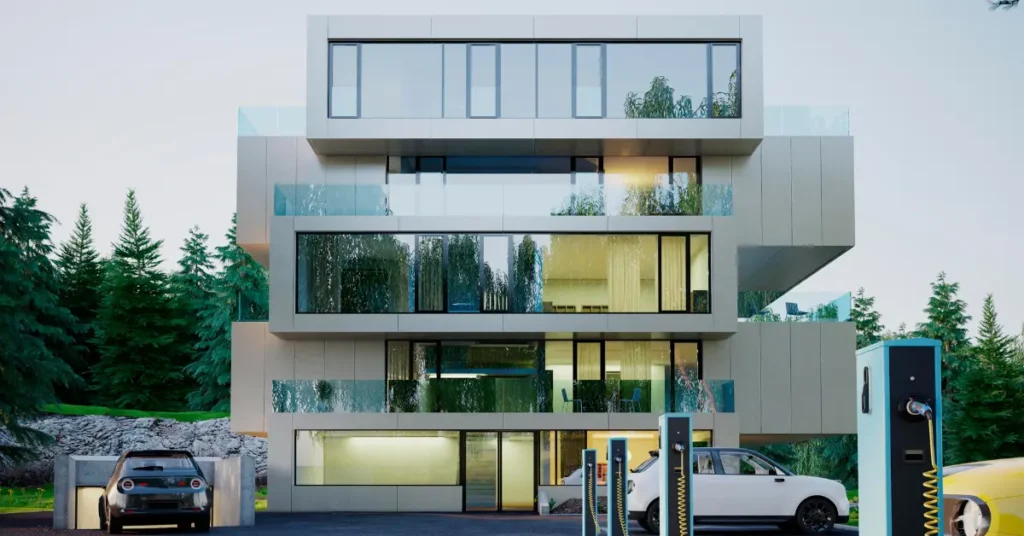Unleashing the Best SketchUp Diffusion Prompts for Architects

In the realm of architectural design, the marriage of creativity and technology has never been more potent. SketchUp Diffusion, an innovative AI-powered plugin from SketchUp Labs, has emerged as a game-changer, enabling architects to transform basic 3D models into stunning, AI-generated images. This revolutionary tool combines the precision of SketchUp with the ingenuity of AI, offering architects new possibilities in visualizing and presenting their architectural visions. In this guide, we’ll explore the best prompts for SketchUp Diffusion that can elevate architectural design to unprecedented levels.
Understanding SketchUp Diffusion for Architects
Before delving into the best prompts, let’s revisit what makes SketchUp Diffusion a transformative tool for architects. This plugin seamlessly integrates with SketchUp, utilizing a text prompt to generate photorealistic or stylized images from your active 3D model. The possibilities are vast, allowing architects to define the visual style of their AI-generated images and control the influence of their text prompts. Whether you’re working on residential projects, commercial spaces, or avant-garde structures, SketchUp Diffusion adds a layer of creativity and efficiency to the architectural design process.
1. Exploring Architectural Styles
Architectural styles are diverse and varied, ranging from classical to contemporary. SketchUp Diffusion allows architects to experiment with different styles using prompts like “Neo-Classical Facade” or “Futuristic Minimalist Interior.” This exploration enables architects to visualize how various styles would manifest in their designs, providing valuable insights for clients and collaborators.
2. Playing with Light and Shadows
Lighting is a crucial aspect of architectural design, influencing the ambiance and mood of a space. Prompts like “Dramatic Sunset Lighting” or “Soft Morning Shadows” allow architects to experiment with different lighting scenarios. SketchUp Diffusion’s AI capabilities can interpret these prompts, generating images that showcase the interplay of light and shadows in architectural environments.
3. Site-Specific Contextualization
Architecture doesn’t exist in isolation; it’s deeply connected to its surroundings. Architects can use prompts like “Urban Context” or “Seaside Retreat” to contextualize their designs within specific environments. This feature is invaluable for projects where site-specific considerations significantly impact the design, such as urban developments or structures integrated into natural landscapes.
4. Materiality and Texture Exploration
Materials and textures contribute significantly to the visual and tactile experience of a building. With prompts like “Sustainable Wood Finishes” or “Industrial Concrete Aesthetics,” architects can explore different material expressions. SketchUp Diffusion’s AI engine can bring these textures to life, offering a preview of how materials will interact and contribute to the overall architectural narrative.
5. Dynamic Interior Layouts
For architects focusing on interior spaces, prompts that describe dynamic layouts can be immensely valuable. Experiment with prompts like “Open-Concept Living Area” or “Innovative Office Layout” to visualize spatial configurations and furniture arrangements. This exploration aids architects in refining interior designs and ensuring optimal functionality.
6. Environmental Integration
Sustainability is a key consideration in contemporary architecture. Prompts like “Green Roof Integration” or “Solar-Responsive Facade” enable architects to explore environmentally conscious design solutions. SketchUp Diffusion can depict how green elements and sustainable features harmonize with the architectural form, providing a preview of ecologically integrated designs.
7. Cultural and Historical Contexts
Architecture often reflects cultural and historical influences. Architects can use prompts like “Traditional Cultural Center” or “Modern Heritage Interpretation” to explore designs rooted in specific cultural or historical contexts. SketchUp Diffusion’s AI-generated images offer a glimpse into how architectural elements can be infused with cultural narratives.
8. Client-Centric Presentations
SketchUp Diffusion isn’t just a design tool; it’s a powerful presentation tool for architects. Tailoring prompts to align with client preferences, such as “Luxurious Residential Retreat” or “Dynamic Commercial Workspace,” allows architects to create compelling visualizations. The AI-generated images become persuasive tools for communicating design concepts effectively to clients and stakeholders.
9. Integration of Natural Elements
Nature-inspired designs are gaining prominence in architecture. With prompts like “Biophilic Courtyard Design” or “Oceanfront Inspired Living Space,” architects can explore the integration of natural elements into their designs. SketchUp Diffusion’s AI capabilities render these designs, showcasing the seamless fusion of architecture and nature.
Incorporating Best Practices
While experimenting with prompts, architects can enhance their SketchUp Diffusion experience by following these best practices:
- Iterative Exploration:
Don’t hesitate to iterate and refine prompts to see how different variations influence the generated images. - Combination of Prompts:
Experiment with combining multiple prompts to create nuanced design scenarios. For example, combining “Modern Office Layout” with “Soft Evening Lighting” can yield unique and inspiring results. - Layering with SketchUp Features:
SketchUp Diffusion complements SketchUp’s existing features. Integrate the generated images into SketchUp models to enhance overall design visualization. - Feedback and Collaboration:
Engage with colleagues and clients to gather feedback on the generated images. SketchUp Diffusion outputs can serve as valuable tools for collaborative discussions and decision-making.
Conclusion: Redefining Architectural Imagination
In conclusion, SketchUp Diffusion stands as a beacon for architects seeking to redefine the boundaries of their design imagination. The best prompts for SketchUp Diffusion go beyond mere descriptors; they encapsulate the essence of architectural visions, allowing the AI to interpret and enhance design concepts. Through experimentation and collaboration, architects can harness the capabilities of SketchUp Diffusion to create captivating, AI-infused architectural masterpieces. As the architectural landscape continues to evolve, SketchUp Diffusion emerges as a catalyst for innovation, propelling architects into a future where the fusion of creativity and technology knows no bounds.












